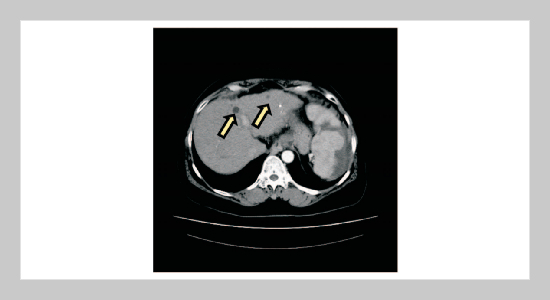REFERENCES
- [1] Cooper, S. M. and Dawber, R., “The History of Cryosurgery,” J R Soc Med, Vol. 94, pp. 196201 (2001).
- [2] Avci, E., Turkoglu, I. and Poyraz, M., “Intelligent Target Recognition Based on Wavelet Packet Neural Network,” Expert Systems with Applications, Vol. 29, pp. 175182 (2005). doi: 10.1016/j.eswa.2005.01.016
- [3] Mladeni, D., “Feature Subset Selection in Text-learning,” Proceedings of the Tenth European Conference on Machine Learning, London, UK. pp. 95100 (1998).
- [4] Jaso, D. M. R., Shih, L., Jaime, T. and David, K., “Tackling the Poor Assumptions of Naïve Bayes Text Classifiers,” Proceedings of the Twentieth International Conference on Machine Learning (ICML-2003), Washington DC (2003).
- [5] Joachims, T., “Estimating the Generalization Performance of an SVM Efficiently,” Proceedings of the Seventeenth International Conference on Machine Learning, Morgan Kaufmann Publishers Inc, San Francisco, CA; pp. 431438 (2000).
- [6] Kamal, N., John, L. and Andrew, M., “Using Maximum Entropy for Text Classification,” IJCAI’99 Workshop on Information Filtering (1999).
- [7] Quinlan, J. R., C4.5: Programs for Machine Learning, San Francisco: Morgan Kauffman (1993).
- [8] Pawlak, Z., “Rough Sets,” International Journal of Computational Information Science, pp. 341356 (1982). doi: 10.1007/BF01001956
- [9] Garcia-Consuegra, J., Cisneros, G. and Navarro, E., “A Sequential Echo Algorithm Based on the Integration of Clustering and Region Growing Techniques,” Geoscience and Remote Sensing Symposium, 2000. Proceedings. IGARSS 2000. IEEE 2000 International, Vol. 2, pp. 648650 (2000). doi: 10.1109/IGARSS.2000. 861659
- [10] Avci, E., “An Expert System Based on Wavelet Neural Network-Adaptive Norm Entropy for Scale Invariant Texture Classification,” Expert Systems with Applications, Vol. 32, pp. 919926 (2007). doi: 10.1016/j.eswa. 2006.01.025
- [11] Avci, E., “Comparison of Wavelet Families for Texture Classification by Using Wavelet Packet Entropy Adaptive Network Based Fuzzy Inference System,” Applied Soft Computing, Vol. 8, pp. 225231 (2008). doi: 10. 1016/j.asoc.2007.01.003
- [12] Smeets, D., Loeckx, D., Stijnen, B., Bart De, D., Vanermeulrn, D. and Suetens, P., “Semi-automatic Level Set Segmentation of Liver Tumors Combining a Spiral-scanning Technology with Supervised Fuzzy Pixel Classification,” Medical Image Analysis, Vol. 14, pp. 1320 (2010). doi: 10.1016/j.media.2009.09.002
- [13] Ruskó, L., Bekes, G. and Fidrich, M., “Automatic Segmentation of the Liver from Multi- and Single-phase Contrast-enhanced CT Images,” Medical Image Analysis, Vol. 13 pp. 871882 (2009). doi: 10.1016/j.media. 2009.07.009
- [14] Iscan, Z., Yüksel, A., Dokur, Z., Korürek, M. and Ölmez, T., “Medical Image Segmentation with Transform and Moment Based Features and Incremental Supervised Neural Network,” Digital Signal Processing, Vol. 19, pp. 890901 (2009). doi: 10.1016/j.dsp.2009.03.001
- [15] Foruzan, H. A., Zoroofi, A. R., Horib, M. and Sato, Y., “A Knowledge-based Technique for Liver Segmentation in CT Data,” Computerized Medical Imaging and Graphics, Vol. 33, pp. 567587 (2009). doi: 10.1016/j. compmedimag.2009.03.008
- [16] Daubechies, I., Ten Lectures on Wavelets, Philadelphia, PA: SIAM (1992). doi: 10.1137/1.9781611970104
- [17] Avci, E., Turkoglu, I. and Poyraz, M., “A New Approach Based on Scalogram for Automatic Target Recognition with X-band Doppler Radar,” Asian Journal of Information Technology, Vol. 4, pp. 133140 (2005). doi: 10.3724/SP.J.1146.2007.00129
- [18] Mallat, S. and Zhong, S., “Characterization of Signals from Multi Scale Edges,” IEEE Transactions Pattern Analysis and Machine Intelligence, Vol. 14, pp. 710 732 (1992). doi: 10.1109/34.142909
- [19] Mallat, S., A Wavelet Tour of Signal Processing, Academic Press, New York: Academic Press (1999).
- [20] Huang, K. and Aviyente, S., “Information-theoretic Wavelet Packet Subband Selection for Texture Classification,” Signal Processing, Vol. 86, pp. 14101420 (2006). doi: 10.1016/j.sigpro.2005.07.032
- [21] Muneeswaran, K., Ganesan, L., Arumugam, S. and Soundar, K. R., “Texture Classification with Combined Rotation and Scale Invariant Wavelet Features,” Pattern Recognition, Vol. 38, pp. 14951506 (2005). doi: 10. 1016/j.patcog.2005.03.021
- [22] Smeets, D., Loeckx, D., Stijnen, B., Bart De, D., Vanermeulrn, D. and Suetens, P., “Semi-automatic Level Set Segmentation of Liver Tumors Combining a Spiral-scanning Technology with Supervised Fuzzy Pixel Classification,” Medical Image Analysis, Vol. 14 pp. 1320 (2010). doi: 10.1016/j.media.2009.09.002
- [23] Grzymala-Busse, W. J., “A New Version of the Rule Induction System LERS,” Fundamenta Informaticae, Vol. 31, pp. 2739 (1997). doi: 10.1002/int.20482
- [24] Last, M. and Maimon, O., “A Compact and Accurate Model for Classification,” IEEE Transactions on Knowledge and Data Engineering, Vol. 16, No. 2, pp. 203 215 (2004). doi: 10.1109/TKDE.2004.1269598
- [25] Baxt, W. G., “Application of Artificial Neural Networks to Clinical Medicine,” Lancet , Vol. 346, pp. 1135 1138 (1995). doi: 10.1016/S0140-6736(95)91804-3
- [26] Bishop, C. M., Neural Networks for Pattern Recognition, Oxford University Press, Oxford, UK. (1995).
- [27] Zhang, G. P., “Neural Networks for Classification: a Survey,” IEEE Transactions on Systems, Man and Cibernetics, Part C, Vol. 30 pp. 451462 (2000). doi: 10. 1109/5326.897072
- [28] Haykin, S., Neural Networks: A Comprehensive Foundation, Prentice Hall Inc., New Jersey (1999).
- [29] Duda, R. O., Hart, P. E., Pattern Classification and Scene Analysis, Wiley, New York (1973).
- [30] Li, Y. and Anderson-Sprecher, R., “Facies Identification from Well Logs: A Comparison of Discriminant Analysis and Naïve Bayes Classifier,” Journal of Petroleum Science and Engineering, Vol. 53, pp. 149 157 (2006). doi: 10.1016/j.petrol.2006.06.001
- [31] Vapnik, V., The Nature of Statistical Learning Theory, New York: Springer (1995).
- [32] Çomak, E. and Arslan, A., “A New Training Method for Support Vector Machines: Clustering k-NN Support Vector Machines,” Expert Systems with Applications, Vol. 35, pp. 564568 (2008). doi: 10.1016/j. eswa.2007.08.047
















